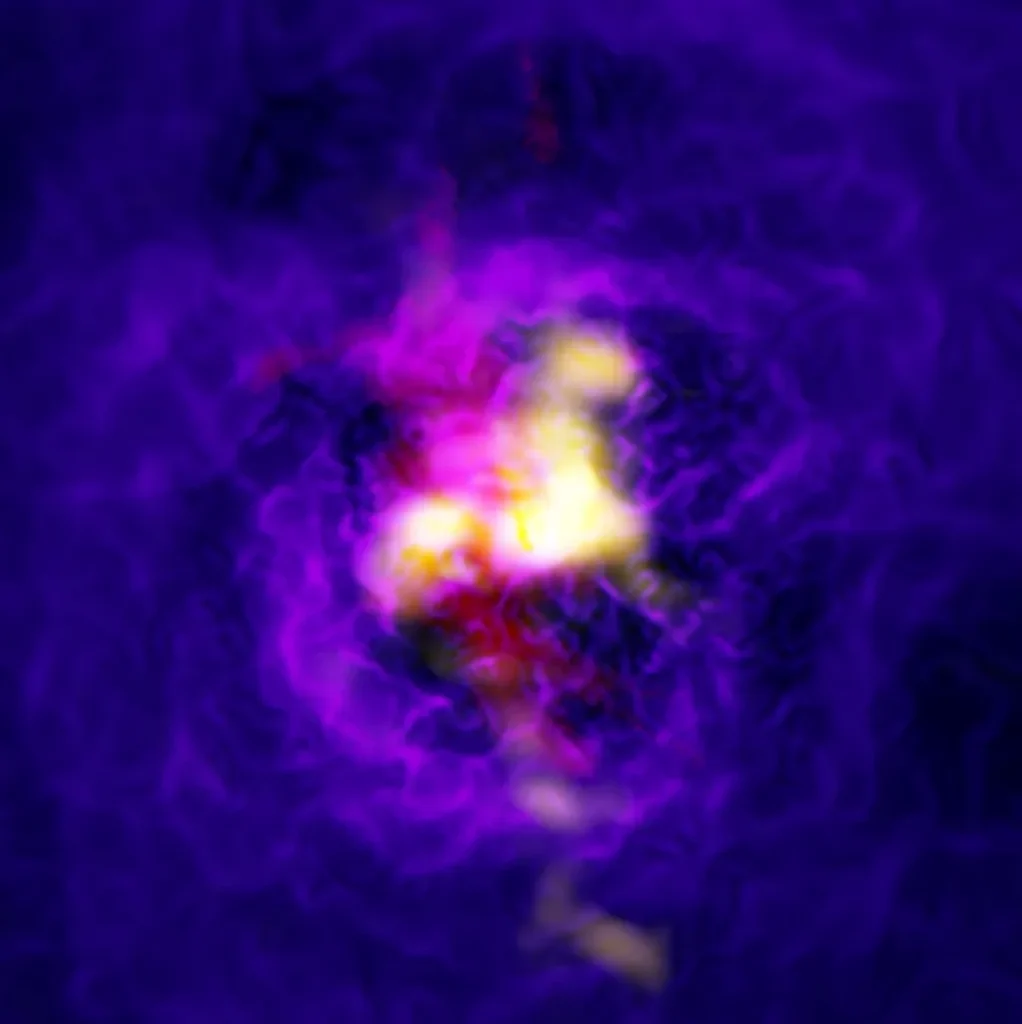In the world of energy and astrophysics, a team of researchers led by Osase Omoruyi from the Center for Astrophysics | Harvard & Smithsonian, along with colleagues from various institutions, has been delving into the intricate dance between active galactic nuclei (AGN) feedback and the intracluster medium (ICM) in the cool-core galaxy cluster Abell 2597. Their findings, published in the Astrophysical Journal, offer insights that could have implications for our understanding of energy dynamics in the universe and potentially even inform energy processes here on Earth.
The team presented deep X-ray observations of Abell 2597 using the Chandra X-ray Observatory, complemented by archival data from the GMRT radio telescope and the SINFONI near-infrared instrument. Their observations revealed that AGN activity has inflated seven X-ray cavities and driven one to three potential weak shocks extending to approximately 150 kiloparsecs. These findings suggest recurrent outbursts occurring on timescales of about 10 million years.
One of the intriguing discoveries was a narrow, 57-kiloparsec X-ray surface brightness deficit, likely shaped by residual sloshing motions within the cluster core. These motions may have amplified magnetic fields and/or displaced gas, creating a plasma depletion layer. Despite the AGN injecting energy comparable to the cluster’s cooling luminosity, radiative cooling persists, replenishing the cold gas reservoir at the heart of the brightest cluster galaxy.
The researchers found that the estimated Bondi accretion power, a theoretical model describing the rate at which a black hole accretes mass from its surroundings, falls short of the observed cavity power. This suggests that “hot” gas fueling is insufficient to sustain the observed AGN activity. Instead, the team supports a chaotic cold accretion scenario, where turbulence-driven condensation fuels the AGN at rates exceeding Bondi accretion. This process sustains a self-regulated feedback cycle that repeatedly shapes the core of Abell 2597.
For the energy sector, understanding these complex interactions can provide valuable insights into energy transfer and feedback mechanisms. The study highlights the importance of continuous fuel supply for sustaining AGN activity, a concept that can be paralleled with the need for consistent energy input in various industrial processes. Additionally, the role of turbulence and magnetic fields in shaping the ICM offers a glimpse into the intricate dynamics that govern energy distribution in large-scale systems, potentially informing the development of more efficient energy systems on Earth.
In summary, the research team’s work on Abell 2597 sheds light on the complex interplay between AGN feedback and the ICM, offering valuable insights into energy dynamics that could have practical applications in the energy sector. The study underscores the importance of continuous fuel supply and the role of turbulence and magnetic fields in shaping energy distribution, providing a foundation for further exploration and innovation in energy technologies.
This article is based on research available at arXiv.

